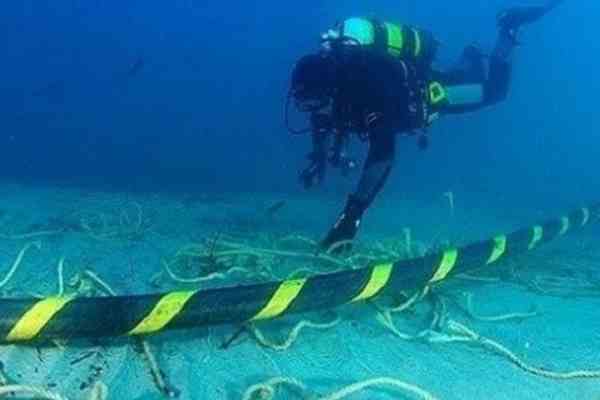Published on the 13/07/2018 | Written by Pat Pilcher

$550m investment’s anchor tenant on shaky ground…
After years in the planning, the Hawaiki undersea cable will be lit up next week.
The $500 million, 43Tbps cable – approximately eight times the capacity of New Zealand’s other trans-pacific submarine internet cable, the Southern Cross and umpteen thousand times faster than New Zealand first 9600kbps internet connection – will provide high-speed directly from the US, passing through Hawaii.
It splits in two, north-west of New Zealand, with one side connecting Australia and the other landing at Mangawhai Heads in Northland.
“The impact is a multi-million dollar question-mark.”
While you would think an extra submarine Internet cable will only ever be good news for New Zealand, online debate has been raging. A logical assumption is that the additional capacity Hawaiki brings will mean extra speed for international data. As Hawaiki adds to existing Southern Cross and Tasman Global Access cable connectivity, diversity – that is being able to re-route data to another connection should one of the other cable options fail – should be enhanced.
Online, however, opinions are divided. Some say that as New Zealand’s telcos are already investors in the Southern Cross and Tasman Global Access cables, they would be unlikely to utilise Hawaiki. Detractors also say given the Southern Cross cable already has diversity architected into its design, Hawaiki is a waste of money.
Supporters chimed in saying that conscious of reliability, data wholesalers selling bandwidth to ISPs will probably use Hawaiki to lessen their risks by spreading data traffic across all available data links. Following this line of logic, it is probable that Spark and Vodafone could buy capacity on Hawaiki.
From a commercial standpoint, Hawaiki also connects several Pacific islands. Because of this, telcos stand to gain from improved and more affordable connectivity into various popular roaming destinations for New Zealand tourists. Then there’s the age-old argument around competition keeping everyone honest.
Hawaiki investors include CallPlus founder Malcolm Dick, Sir Eion Edgar (chair of Forsyth Barr) and French telecommunications entrepreneur Remi Galasso.
The most significant benefit of Hawaiki’s extra bandwidth and connectivity is beyond debate. High-speed internet connectivity is starting to become an increasingly affordable commodity, even if the short-term impacts of this are, as yet, not fully realised.
Perhaps the first sign of this is Canterbury, Lincoln and Victoria Universities canning their REANNZ contracts, with Victoria citing an inability to agree on fair pricing as the principal reason.
REANNZ (the Advanced Education and Research Network) was set up in 2006 as a means of providing high-speed internet access for crown research institutes and the tertiary education sector. Back in 2006 high-speed broadband was a pipe dream with megabit connectivity considered fast. Since then, Gigabit connectivity has become commonplace, and high-speed internet access gets seen more as a commodity rather than a specialist requirement.
REANNZ has a 25-year $65 million anchor tenancy contract on the Hawaiki cable, paying $15 million in crown funding up front and purchasing at least $50 million of bandwidth over the 25 years.
The move by three significant universities comes after the previous government reduced REANNZ’s funding. The funding decrease was met with suspicion by universities, most of whom anticipated price increases from REANNZ as an indirect result of funding cuts.
With three large customers pulling out of REANNZ, the impact is a multi-million dollar question-mark.
Last year, REANNZ recorded revenues of just over $21 million and declared a modest $6.7 million surplus. While commercial sensitivities make finding out how much the three universities contributed to REANNZ’s bottom line impossible, there is little debate that impacts are likely for REANNZ.
While REANNZ has been offering specialist services alongside connectivity for some time, it is possible that REANNZ could seek additional funding or even broaden their remit to providing high-speed connectivity and related services to crown agencies beyond tertiary and research institutions.



























